- Call us: 01444 237070
- Contact Us
- Stores
- Sign In / Register
-
- Back
- Used Cameras
- Used Accessories
- Used Lenses
- Used Video
- Used Film Equipment
- Used Stock Alert
- Used Blank Test
- Sell or Part Exchange
- Used Clearance
- Recently Added Used Equipment
- Park Picks
- All Used Black Friday Deals
- Faulty
- Trade-In
- Blog
- New in
- Call us
- Contact us
- Stores
- Sign in
- Categories
- Tips & Inspiration
- Reviews
- News
- Events
- Features
- Buying Guides
- Competitions
May Astrophotography Highlights UK and NI
What a crazy month April has been! Early on (well, late March to be honest!) we saw the partial solar eclipse and had our fair share of clear nights. Sadly, for me on a personal level, my car’s engine blew up and so my ability to get to darker skies has been limited. For me, as it is Galaxy Season, I don’t mind so much!
May sees the UK view of the night sky rotating back out of intergalactic space and to our own galaxy, where we can see the Milky Way core and all the exciting and beautiful deep space objects that it holds. The downside is that
we don’t see astro dark till around 22:30, and towards the end of the month our opportunity to get data will be reduced to just 4 hours between 23:00 – 03:00. So this is where real dedication to this discipline comes in!
Lunar observation
Moon Phases: SpaceWeatherLive
Partial Solar Eclipse – 29th March 2025 – Worthing
Caused by the Moon passing in front of the Sun, on this occasion about 30%. Don’t worry if you missed it, the next Partial Solar Eclipse is on 12th August 2026, where it will be almost 90% covered!
If you want to see a full eclipse in the UK, the next one isn’t until 23rd September 2090. Sadly, it is unlikely I will live to see it. The good news is that the partial one next year will be a total one in other countries, so I may well travel to see it!
Images courtesy of my Astro Club’s leader Steve Goddard. Using his Lunt solar scope, he managed to capture these images on Worthing Seafront.
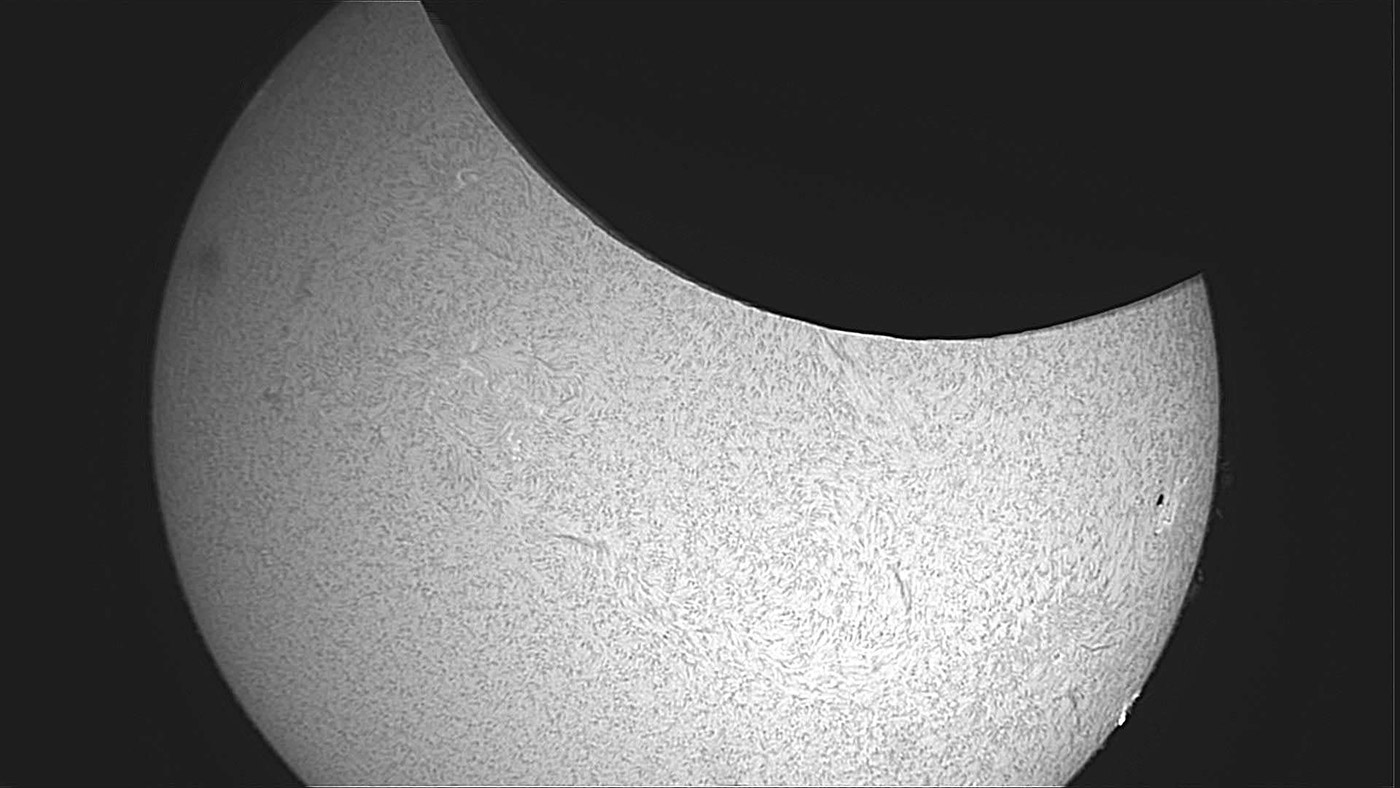

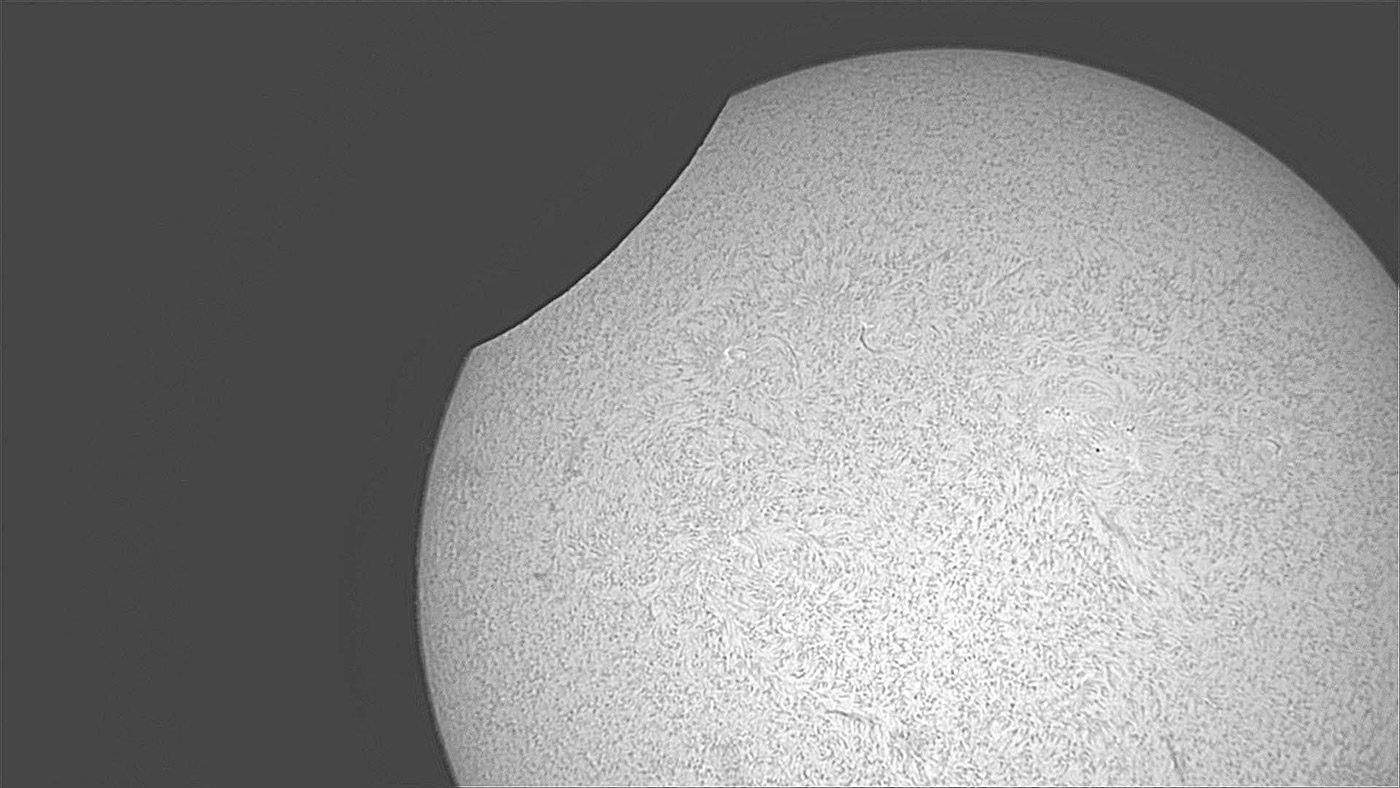
Lunt 40mm with ASI174mm camera with ASIAIR for capture.
We turn once again to our dear friend Bob Marshall for his wondrous captures of our closest celestial object.
Bob writes:
“Both images are 2-minute videos in SER format, showing two areas of the Moon.
The first is of one of the greatest of the walled lunar plains, rather than a crater, called Schickard, situated in the southeast quadrant of the Moon, as we see it. Some 137 miles across, with walls rising to around 8,000 ft.”
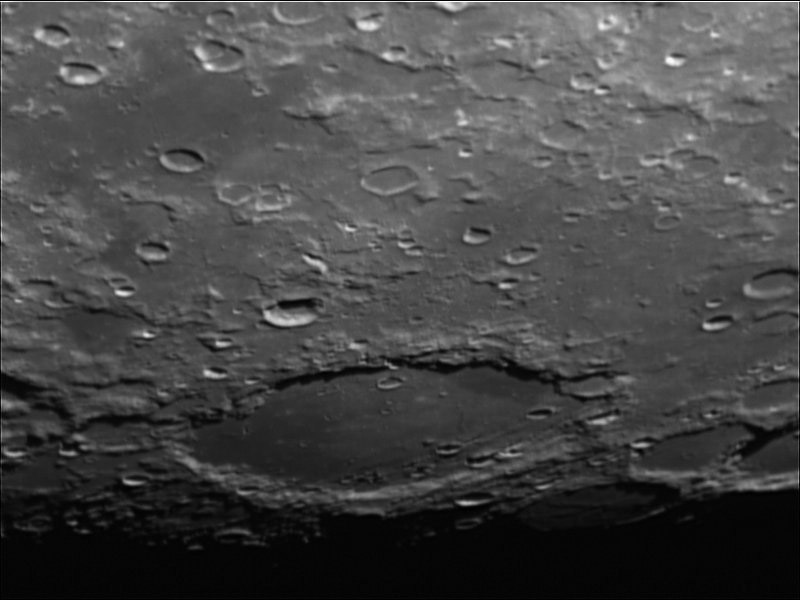
“The second capture is of the large impact ray crater, Copernicus, named after the famous Polish astronomer, Nicolaus Copernicus.
This magnificent crater is 56 miles in diameter, located between Oceanus Procellarum and the Mare Imbrium. Its stunning ray system can be seen best when the Moon is full.”

All captures were taken with my EVO C8HD, with a ZWO ASI178MC colour camera. All at prime focus, with no Barlow or reducer, and captured using SharpCap 4.
Planetary
Thanks again to Bob Marshall for sharing some of his planetary work this month. He writes:
“Jupiter, which is now starting to sink towards the western horizon and gets quite low by 22:00 hrs (21:00 hrs UT).
Both are AVI videos (not intentional), the first 1 min, the second 2 min. Exposures 5 ms. Gain 267 / 200 fps. ROI 320 x 240. Both stacked in ASI Studio, 30% of 12,014 and 23,995 frames respectively.”
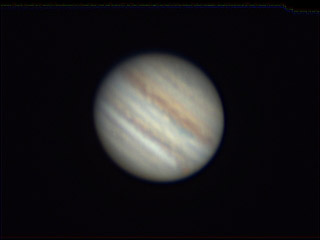
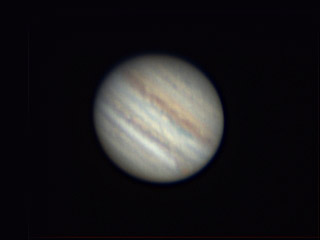
“Mars, only 7.6 arcsec at the time! Still in the constellation of Gemini. A 2 min video in SER format, 4 ms exposure. Same ROI as the first two captures but a frame rate of 244 fps. Gain 250. Again stacked in ASI Studio, using 30% of 294,365 frames.”
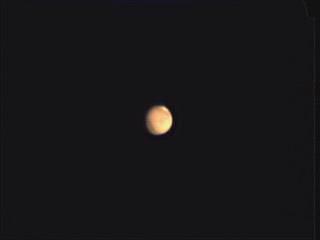
All captures were taken with my EVO C8HD, with a ZWO ASI178MC colour camera. All at prime focus, with no Barlow or reducer, and captured using SharpCap 4.
Deep Sky Objects
Thor’s Helmet Nebula (NGC 2359) – 18/03/2025 Arun Yacht Club – Gary Edge
Very kindly, Gary Edge has allowed us to share this mystical celestial masterpiece of the very faint emission nebula in the constellation of Canis Major. It is 12,000 light-years away
and about 30 light-years wide. At its centre is a Wolf-Rayet star, which is extremely hot in its pre-supernova stage of life. The horns of the helmet are thought to be caused by nearby
molecular clouds, which curved the bow-shock structure. This explosion probably occurred some 200,000 years ago, and it continues to grow at a rate of 10–30 km/s, but due to its vast size and distance, it is not noticeable.

Exif
Askar 120 APO
ZWO ASI294MC-Pro
Optolong L-Ultimate Filter
StellarDrive Sky-Watcher NEQ6 Mount
40 x 180s Lights Gain 120 -10 Degrees
25 x Darks (Library)
Stacked and edited in Affinity Photo2
Pinwheeel Galaxy M101 - South Downs - 05/04/2025:
This image of M101 is somewhat of a miracle. When I got to one of my favourite dark sky locations, I realised I had left my counterweight and bar at home!
Fellow astronerd John came up with the genius idea of using a stick, and Gary Edge suggested a wheel jack as a weight.
So, using a broken EQMod cable, I assembled my weight. I then realised it wasn’t heavy enough still, so I added a rucksack full of astro bits—and it was just enough.
Guiding was reasonable considering my situation and remained under 3!
1 hour 18 minutes’ worth of subs were usable. I reduced my normal exposure time to 1 minute to compensate for my Heath Robinson approach to astrophotography!
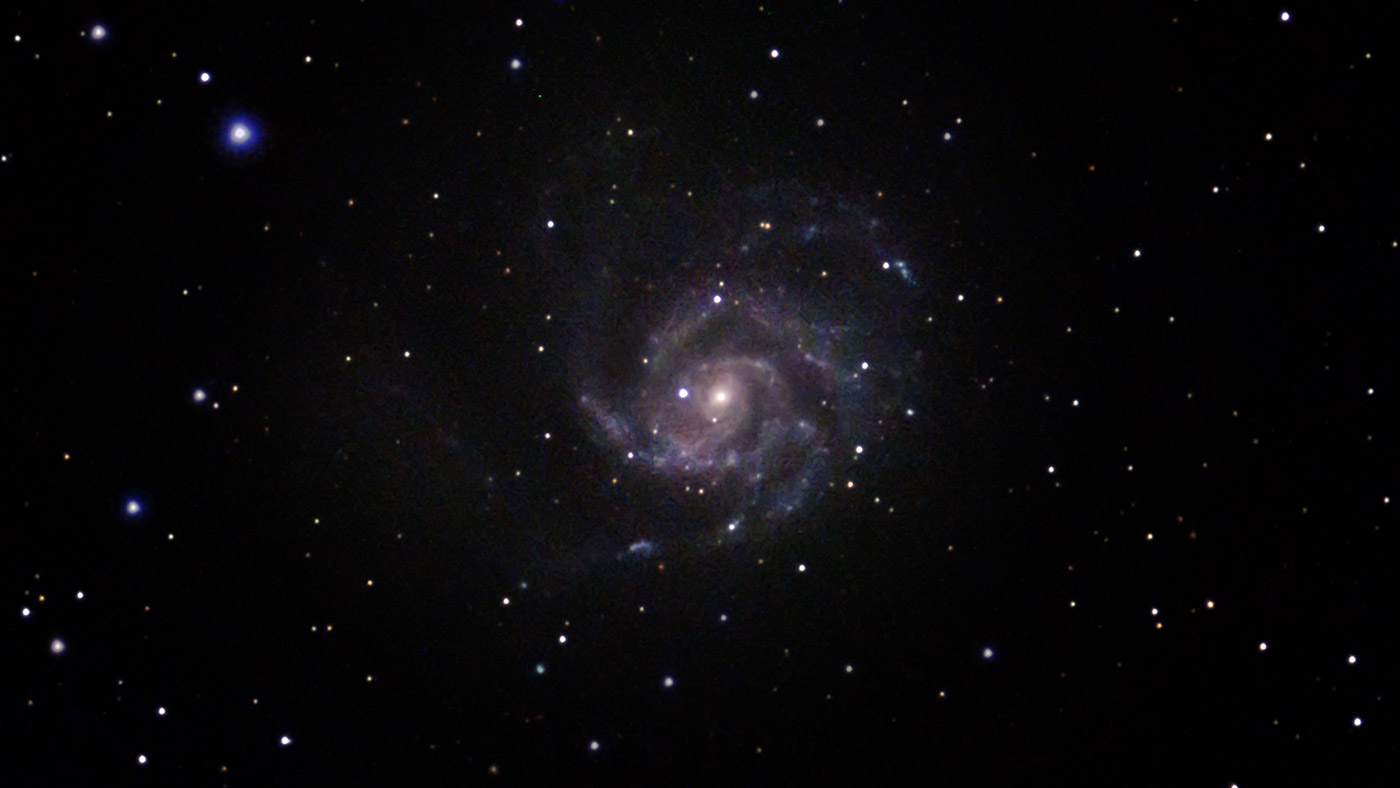
EXIF:
Camera: Canon 500D (astro modified)
Telescope: Altair Astro 70ED Telescope (420mm)
Mount: Sky-Watcher EQ5 Pro
Guide Camera: ZWO ASI120mm-s
Guide Scope: SVBony 30mm (f4)
Computer: ZWO ASIAIR pro
Method:
Lights: 78 x 60 second exposure @ISO1600.
Darks: Library.
Flats: Library.
Stacked in Deep Sky Stacker, StarNet++ for star removal. Stretched, recompiled and edited in PhotoShop and Lightroom.
M51 The Whirpool galaxy... only 63 minutes data! 08/04/2025
John has very kindly lent me a ZWO ASI482MC camera, to which he has added a fan to decrease noise through cooling,
and it comfortably sits at around 10°C. Certainly less noise than the 500D, which was usually around 20°C!
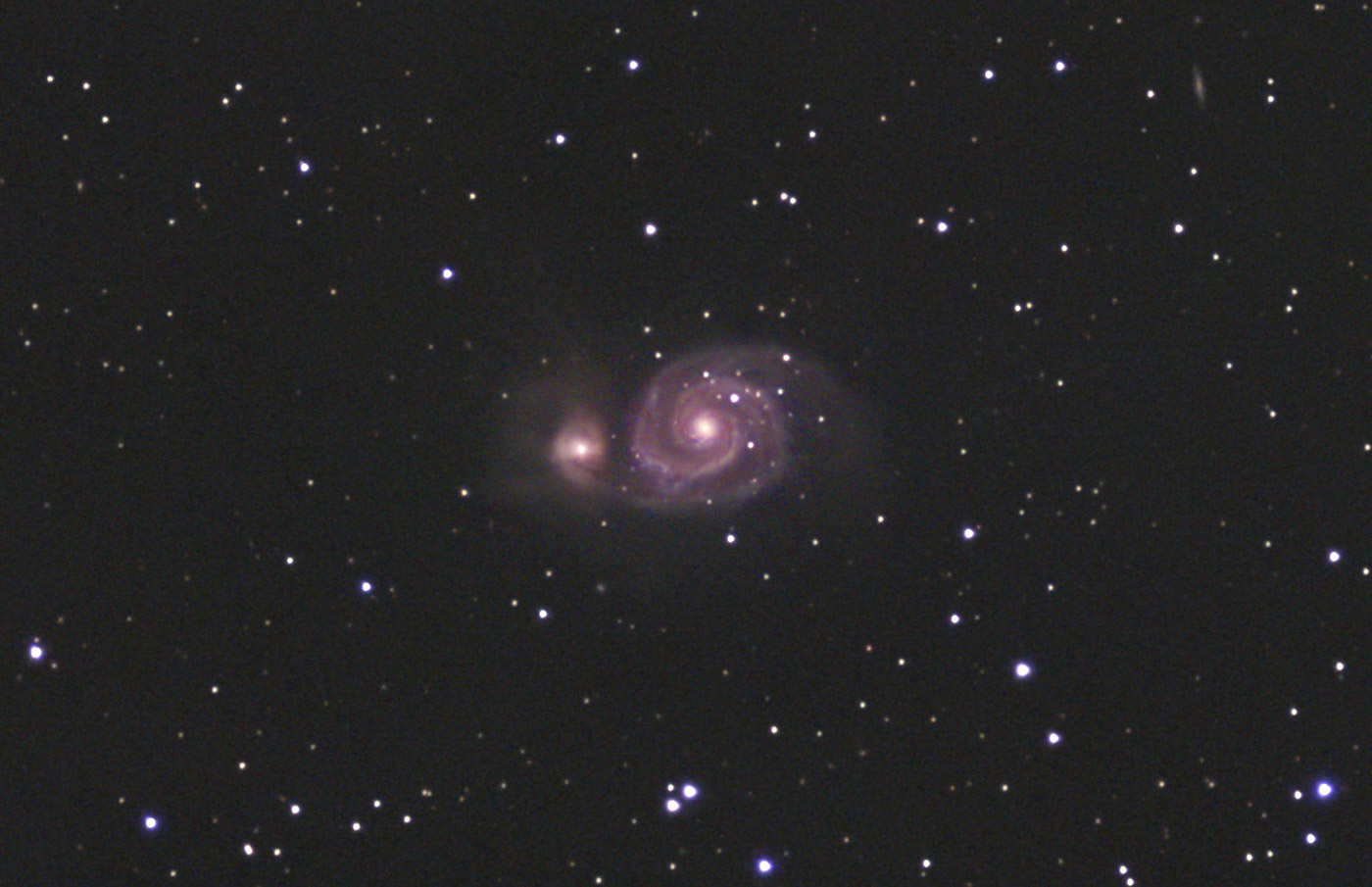
EXIF:
Camera: ZWO ASI482MC + after market fan strapped to back.
Telescope: Altair Astro 70ED Telescope (420mm) + 0.8 reducer.
Mount: Sky-Watcher EQ5 Pro
Guide Camera: ZWO ASI120mm-s
Guide Scope: SVBony 30mm (f4)
Computer: ZWO ASIAIR pro
Method:
Lights: 63 x 60 seconds exposure @Gain 103.
Darks: 5 x 60 seconds.
Stacked in Deep Sky Stacker, StarNet++ for star removal. Stretched, recompiled and edited in PhotoShop and Lightroom.
This group of galaxies, although often only mentioning two of them, actually includes many more visible in this image. They can be found in the constellations of Ursa Major and Camelopardalis.
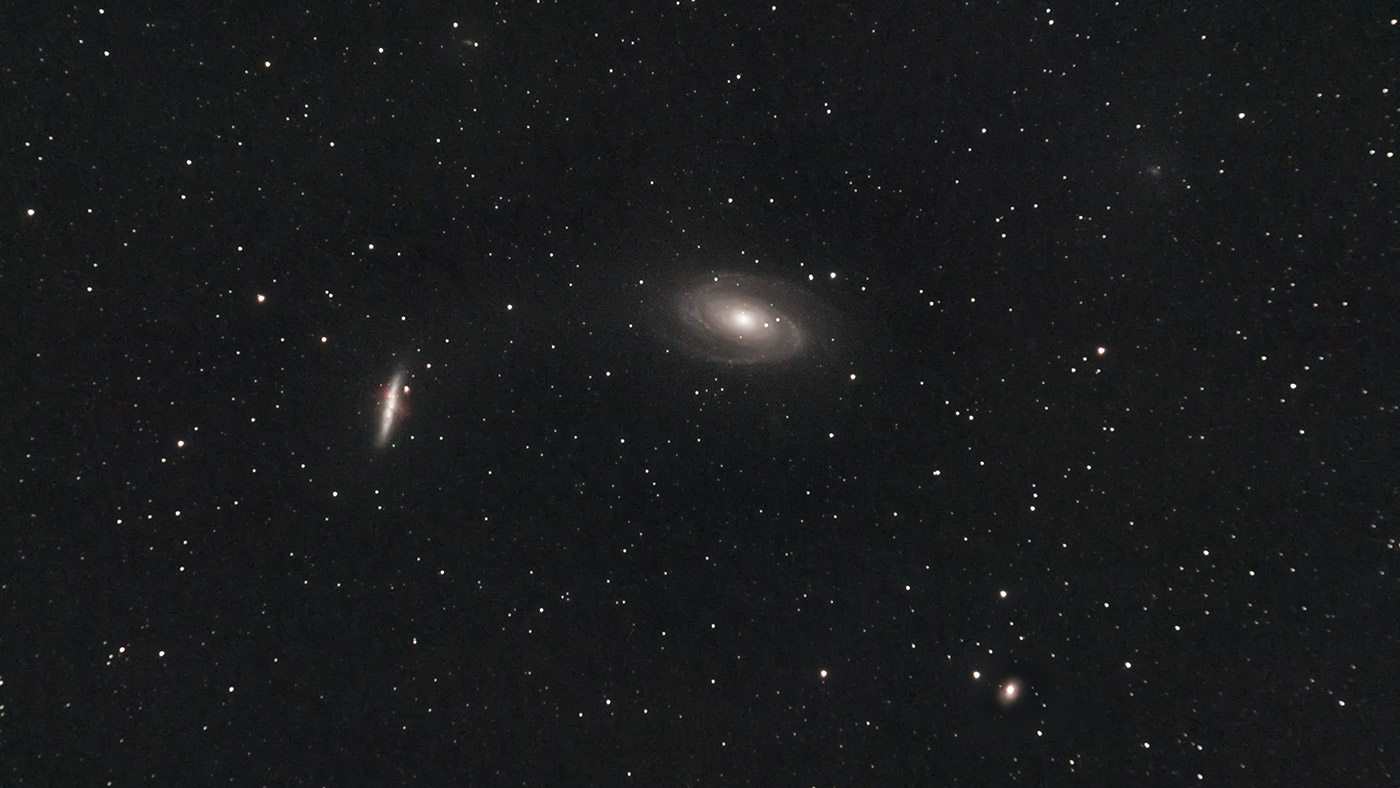
EXIF:
Camera: Canon 500D (astro modified)
Telescope: Altair Astro 70ED Telescope (420mm)
Mount: Sky-Watcher EQ5 Pro
Guide Camera: ZWO ASI120mm-s
Guide Scope: SVBony 30mm (f4)
Computer: ZWO ASIAIR pro
Method:
Lights: 30 x 60 second exposure @ISO1600.
Darks: Library.
Flats: Library.
Stacked in Deep Sky Stacker, StarNet++ for star removal. Stretched, recompiled and edited in PhotoShop and Lightroom.
Share this post:
By Jonathan Penberthy on 29/04/2025
Jonathan Penberthy
Cosmic Shutter Seeker and Star Programmer
Jonathan Penberthy is the Cosmic Shutter Seeker and Star Programmer at Park Cameras, with over 20 years of experience as a software engineer. His career journey has spanned industries, but a move to Park Cameras sparked a passion for astrophotography. Jonathan’s interest began while working on a lens selection app, leading him to explore the night sky with a Canon 7D. When he’s not programming or photographing the stars, he enjoys sailing and navigating by the cosmos. Learn more on his profile page.
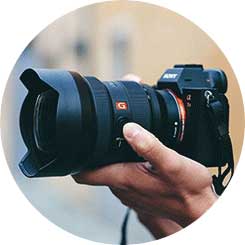
Trade in your old equipment
Fast and easy trade in service ensures your old gear is collected efficiently and you are paid quickly! It's very simple to trade in your unwanted photography gear. Just head over to our dedicated Sell or Part Exchange page, fill out the details, and we'll get back to you with an offer for your old gear. Take the cash, or put it towards the cost of your new gear. It's up to you! Find out more
sign up to the newsletter
Keep up to date on the latest photography news, events and offers. Sign up now
